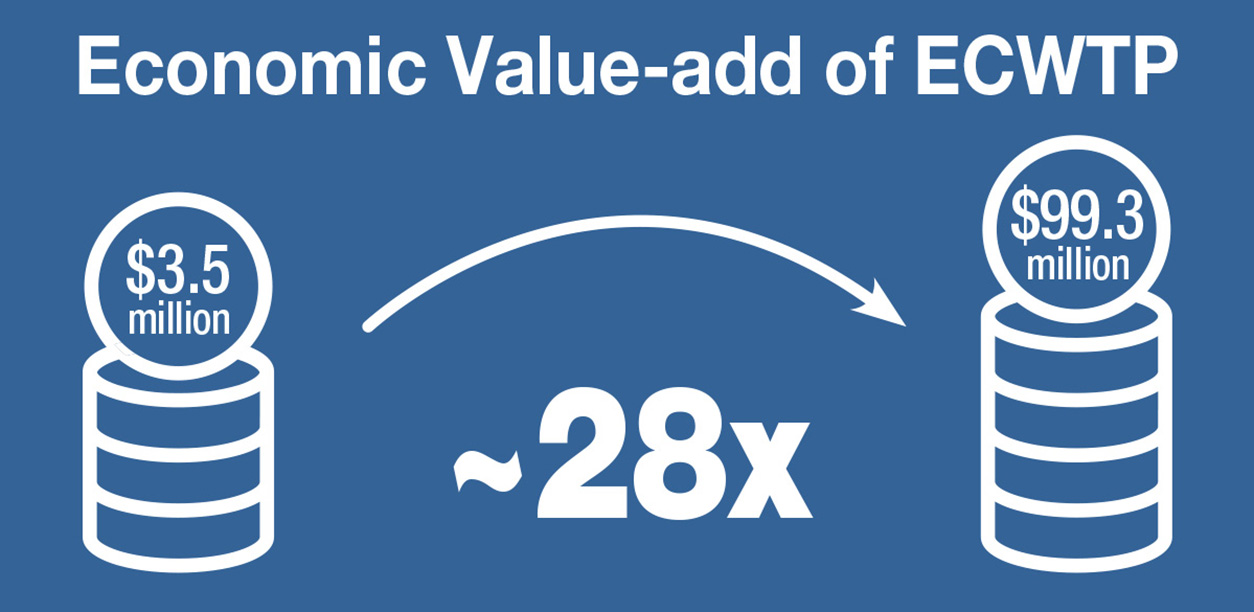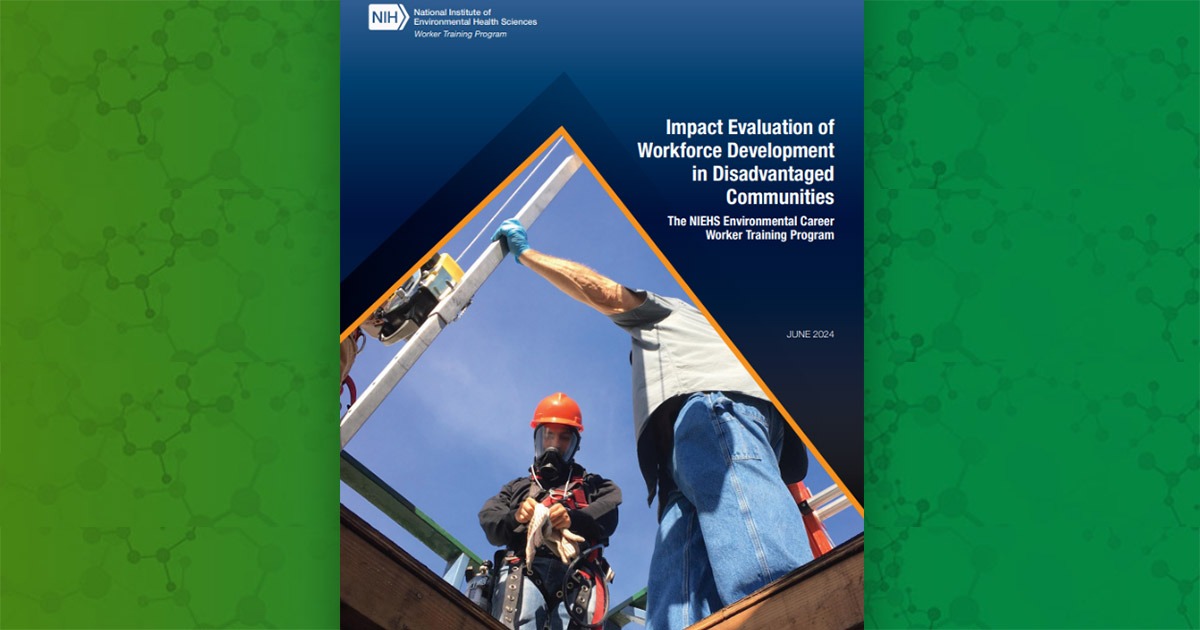A relatively small federal investment in the Environmental Career Worker Training Program (ECWTP) results in vast societal and economic benefits, according to a new program evaluation report covering 2014 to 2022.
Through well-targeted training, the program helps people from disadvantaged and underserved communities obtain careers in environmental construction, remediation, and cleanup. Part of the broader Worker Training Program, the ECWTP is administered by NIEHS.
Notably, when compared to people with similar characteristics who were not in the training program, the evaluation found workers who completed ECWTP training experienced the following.
- Were 80% more likely to be employed relative to nongraduates of the program.
- Earned, on average, about 32% more per hour.
- Worked, on average, about three more hours per week.
More than 14,500 individuals have been trained by the ECWTP since its inception in 1995. Through grantees, the program has reached people in 30 communities across 15 states and U.S. territories.
“Graduates of our program can be employed in the renovation of communities, as in lead pipe replacement or asbestos abatement, or construction after a natural disaster, like a hurricane,” said Sharon Beard, chief of the Worker Education and Training Branch at NIEHS. “When a community succeeds in getting environmental contamination addressed, no matter the cause, properly trained residents may be hired to do the work. Construction and the environment go hand in hand.”
Transforming lives
In addition to gaining job-related competencies, program participants expand their life skills in areas such as basic math, time management, and effective communication.
“Our federal funding goes to organizations that serve disadvantaged communities,” said Eric Persaud, Dr.P.H., a co-author of the report and health specialist with NIEHS. “Many people in these communities have experienced unemployment, homelessness, or are maybe coming out of correctional facilities.”
People transitioning from incarceration to community living — referred to as reentering — can have considerable trouble finding and keeping jobs. However, according to the report, ECWTP graduates with a history of incarceration do well in the job market.
“Rather than simply steering people with prior criminal records toward low-wage jobs, which is a problematic approach of some transitional programs, we help prepare people to cope with challenges on the job and in life,” added Persaud. “It’s a positive difference that affects their future.”
An emphasis on life skills helps all participants succeed and is “fundamental to the program’s success,” according to the report.
Successful model for worker training

Across the U.S., there are many workforce development and job placement programs for various occupations and industries. The components of the ECWTP set it apart and show a different, successful model for workforce development. Its trainees achieve a high rate of job placement.
“The clear achievement of the ECWTP led to its selection, in 2021, for the White House Justice40 Initiative,” said Beard.
The ECWTP fosters and supports partnerships among grant recipients, community leaders, and more than 200 community-based organizations, all of which enhances the job placement and personal development of trainees. These organizations provide cash and in-kind donations to the program.
“Our workforce development program is built on relationships and gets results,” continued Beard. “The model we have is scalable, and, with resources, we could serve more people.”
Reaping economic rewards

The ECWTP received funding of $3.5 million in fiscal year 2021. Over the analysis period of nine years, annual program funding resulted in about $99.3 million returned to the economy annually, on average, or a cumulative value of nearly $894 million.
In addition to increased earnings, economic benefits from the program include reduced work-related injury costs, reduced job search and hiring costs, and reduced crime-related victimization and incarceration costs.
“These value-added benefits can lead to more environmentally and economically sound communities,” said Beard. The quantitative analysis in the program evaluation was led by Benjamin Artz, Ph.D., an economics professor at the University of Wisconsin Oshkosh.
Quantitative and qualitative findings are further described in the report, which is available for download from the NIEHS website, “Impact Evaluation of Workforce Development in Disadvantaged Communities: The NIEHS Environmental Career Worker Training Program.”
(Carol Kelly is managing editor for the NIEHS Office of Communications and Public Liaison.)
Source link
factor.niehs.nih.gov

